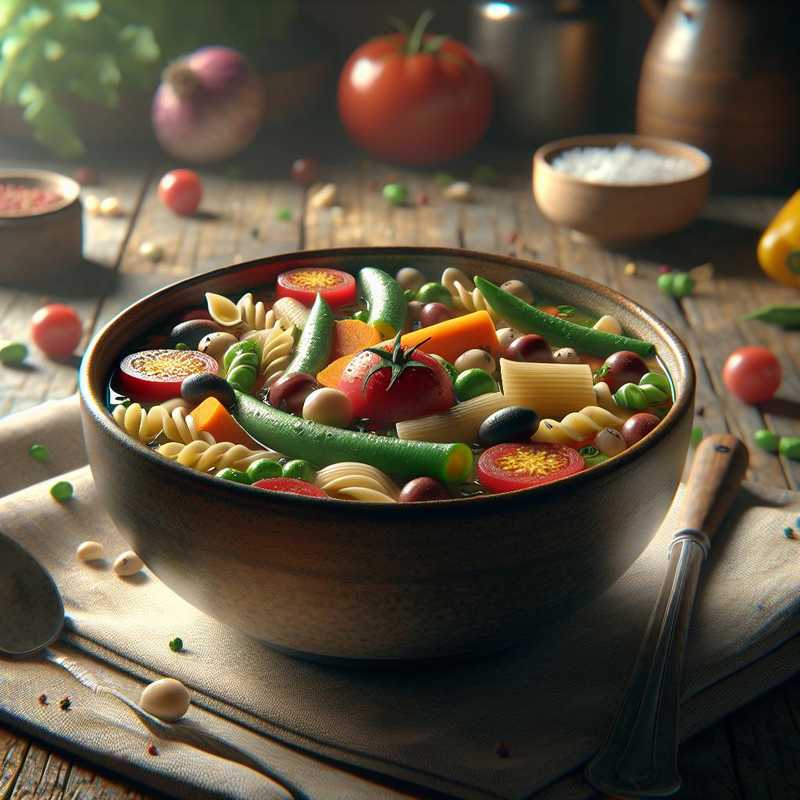Cold Minestrone
17/11/2023Cold minestrone is a summer version of the classic hot minestrone soup. It is a fresh, light, and nutritious dish, an ideal solution for hot days. My Italian variation adds a Mediterranean touch with the use of fresh basil and a nice drizzle of raw extra-virgin olive oil.
Ingredients
- 1 zucchini
- 1 bell pepper
- 1 carrot
- 1 stick of celery
- 1 small onion
- 100 g of fresh green beans
- 150 g of fresh or frozen peas
- 200 g of ripe tomatoes
- Fresh basil as needed
- Salt and pepper as needed
- Extra-virgin olive oil as needed
- 1 liter of vegetable broth
- grated Parmesan cheese for serving (optional)
Preparation
-
Wash all the vegetables. Dice the zucchini, bell pepper, carrot, and celery into roughly one-centimeter cubes. Peel and finely chop the onion. Clean the green beans and cut them into pieces. Make a cross incision at the bottom of the tomatoes, blanch them in boiling water for a few seconds, then peel, deseed and dice them.
-
In a large pot, gently sauté the onion with a drizzle of extra-virgin olive oil. Add the carrot, celery, and green beans. After a few minutes, also add the zucchini and bell pepper. Season with salt and pepper to taste.
-
Add the vegetable broth to the vegetables and let cook on a medium-low heat until all the vegetables are tender but not falling apart.
-
A couple of minutes before turning off the heat, add the peas and diced tomatoes. Turn off the heat and let the minestrone cool for a few minutes.
-
Blend a portion of the vegetables with an immersion blender to create a cream to add back to the rest of the minestrone for a thicker and creamier consistency, if you like.
-
Let the minestrone cool down completely and then transfer it to the refrigerator for at least 2 hours before serving.
-
Serve the cold minestrone garnished with fresh basil leaves and a drizzle of extra-virgin olive oil. If you like, you can add a sprinkle of grated Parmesan cheese.
Curiosity
Cold minestrone lends itself to numerous variations according to the seasonal availability of vegetables. It is also a great way to use up leftover vegetables, reducing kitchen waste. Moreover, minestrone is a dish rich in history, whose origins are lost in the mists of time, when the simplicity of field ingredients met the need to nourish substantively.
This dish is highly customizable and can be enriched with your choice of aromatic herbs, such as thyme or mint, to give a new and surprising taste every time.
